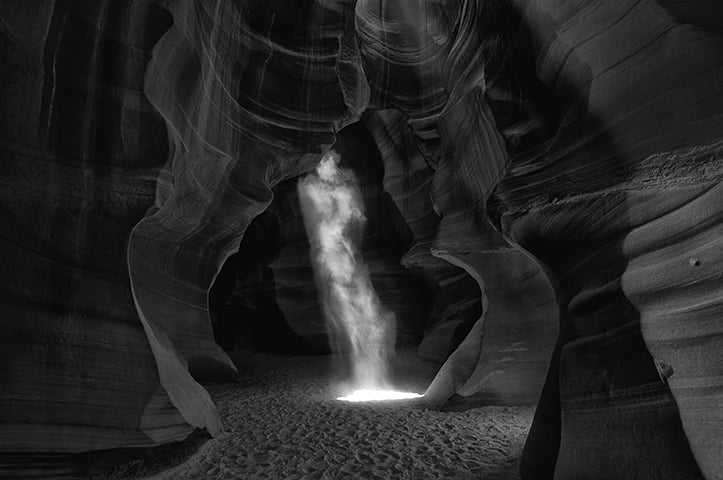Analysis
What Are People Saying About Peter Lik’s Photo Sales Scheme?
We scour Twitter for the best responses.

We scour Twitter for the best responses.

Sarah Cascone

Peter Lik’s highly profitable photography business has come under fire this week, and the Internet can’t stop talking about it. When Lik announced the $6.5 million sale of the photo Phantom this past December (see $6.5 Million Landscape Is World’s Most Expensive Photo), it raised a lot of questions. Who was the Australian photographer, and what kind of collector would be willing to spend that kind of money on one of his images?
It is now clear that Lik’s target customers are not seasoned collectors, but tourists with deep pockets looking for a pretty and palatable picture to hang on their living room walls (see New York Times Exposes Peter Lik Photography Scheme). Sold in editions of 950, each Lik image starts out at a fairly reasonable $4,000. But the price quickly shoots up in ever-escalating increments as more prints are sold. “Premium Peter Lik ” photos, a category of works that are 95 percent sold out, cost $17,500, and the very last prints in an edition have been known to fetch upwards of $200,000.
All told, Lik can earn more than $7 million for selling out a single edition—but the artnet Price Database shows that on the secondary market, Lik has only topped the $3,000 mark once for a 2008 sale of a color version of Phantom called Ghost, which sold for $15,860.
There was significant backlash to this news on Twitter, where @LarryWasser called it “the sad story of uneducated buyers” and @polarapfel saw Lik’s business as a guide to “how to run a successful scam on novice art buyers.” On Facebook, Ken Micallef called Lik’s practices “sickening and hilarious.”

Peter Lik Phantom. Photo: Peter Lik.
Others seemed impressed, albeit grudgingly so. “Whatever your opinion on his #art #photography #vision #value, one thing is sure: #marketinggenius,” noted @nataschadea. “Part Warhol, Part Thomas Kinkaide, Peter Lik has his built his own self-serving art market,” added @JCGamble. @PixelVixenUK saw no problem with Lik’s sales tactics, saying “Why is it so wrong to inflate your market? Don’t people understand it’s good for the rest of us too if we share that market? #peterlik.”
Not everyone was surprised by the inner-workings of the Lik photography machine: “One of my biggest pet peeves has finally been validated: #PeterLik is a #fraud” wrote @AndrewSKlug.
The initial news of the record-breaking sale also sparked conversation on social media. “The worlds most expensive photo is a canyon scene or an old man taking a piss as seen from behind? #phantom #PeterLik” wrote @CormacCor back when it was first announced in December. Others, like @sharon_gibbons, were fans, claimed “I can’t stop staring at you, Phantom. All $7.8 million of you #PeterLik.” For @natalieroth, there was a simple explanation: “Only in Vegas.”
Amusingly, Tweets responding to the Lik controversy are interspersed with posts from the photographer’s official account, sharing his over-saturated images with such platitudinous captions as “lighthouses are the guardians of the ocean, radiating warm, special energy.”